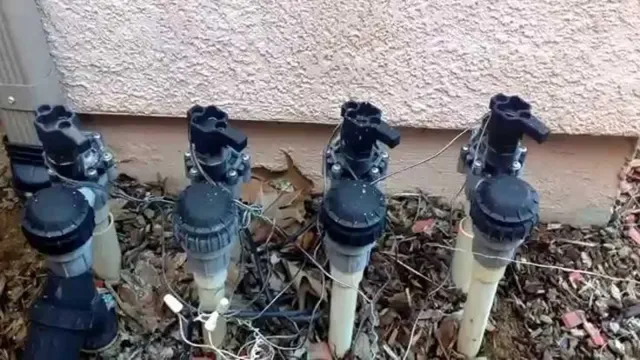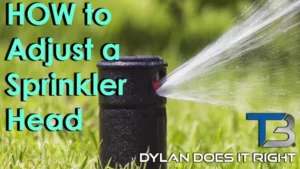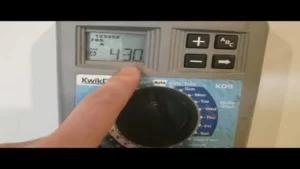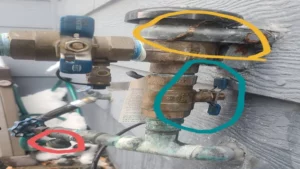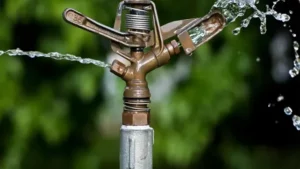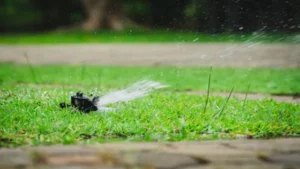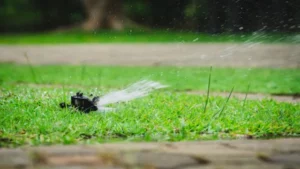Is your lawn looking a little dry? Are your plants starting to wilt in the scorching heat? It might be time to turn on your sprinkler system. But when exactly should you do that? Fear not, as we’ve got you covered with this comprehensive guide on when to start using your sprinkler system. Spring is often the time when most homeowners turn on their sprinkler systems, but it’s important to consider a few factors before doing so.
Firstly, check your local weather forecast to ensure there isn’t any rain scheduled for the coming days. Rainfall can vary greatly depending on your location, and it’s important to adjust your sprinkler usage accordingly. Additionally, inspect your sprinkler system for any damages that may have occurred during the winter months.
As summer approaches and temperatures rise, your lawn and plants may require more water than usual. This means it’s time to adjust your sprinkler system accordingly and increase its usage. However, be mindful of any local water restrictions that may be in place.
It’s also important to monitor your lawn and plants regularly. If you notice any signs of overwatering or underwatering, adjust accordingly. A healthy lawn should have a slight bounce when you walk on it and a vibrant green color.
In conclusion, there isn’t a one-size-fits-all answer to when to turn on your sprinkler system. It’s important to consider your location, weather forecast, and the state of your lawn and plants before doing so. By following these guidelines and using your common sense, you’ll have a healthy and vibrant lawn in no time.
Understanding the Weather and Soil
One of the most important factors to consider when deciding when to turn on your sprinkler system is the weather and soil conditions in your area. It’s important to understand the weather patterns in your region and how they can affect the moisture levels in your soil. For instance, if you live in an area with hot, dry summers, you may need to turn on your sprinkler system more frequently in order to keep your grass and plants healthy.
Additionally, you need to keep an eye on the soil moisture levels in your yard. One way to do this is by sticking a soil moisture meter into the ground periodically to check for moisture levels. If the soil is too dry, it’s time to turn on the sprinkler system.
Conversely, if the soil is too wet, you may be over-watering your lawn, which can lead to disease and other problems. Overall, understanding your local weather and soil conditions can help you make informed decisions about when to turn on your sprinkler system.
Checking the Rain Gauge
Checking the rain gauge is an important part of understanding the weather and its impact on the soil. If you’re a farmer or gardener, you know that the amount of rainfall is crucial to the health of your plants. That’s why checking your rain gauge on a regular basis is vital.
A rain gauge is a simple tool that helps you measure the amount of rainfall in a particular area. It’s easy to use, and it doesn’t require any special knowledge or expertise. By checking your rain gauge regularly, you can get a better understanding of the weather patterns in your area and make informed decisions about when to water your crops or plants.
Remember, soil moisture is essential, and understanding the weather is the key to achieving healthy plants. So, next time you’re outside, take a peek at your trusty rain gauge and see how much rain has fallen. It may just save your plants.
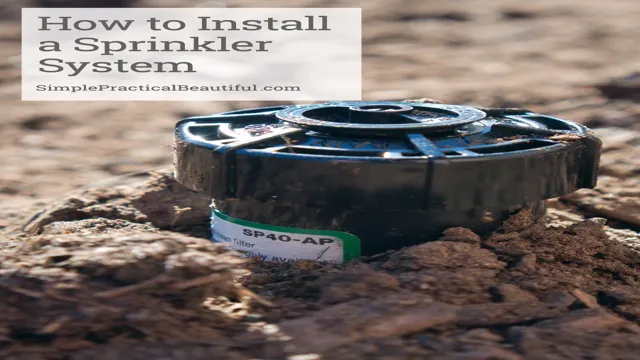
Examining Soil Moisture Levels
Understanding the soil moisture levels is crucial when it comes to managing and predicting weather conditions. As we all know, water is one of the essential components for the growth and survival of plants. Soil moisture levels play a significant role in determining how much water the plants can take up.
When the soil is too dry, the plant will not have enough water to absorb, resulting in slower growth or even death. On the other hand, if the soil is too wet, the plant roots will become waterlogged, leading to root rot. Soil moisture levels also affect the overall temperature of the soil.
Dry soils tend to heat up faster than wet soils, and the warmer the soil, the more susceptible the plants are to heat stress. Soil moisture levels can also impact the ability of the soil to absorb and sequester carbon, affecting the carbon cycle and contributing to climate change. To accurately monitor soil moisture levels, different devices such as soil moisture sensors are used, along with weather forecast models to accurately predict the weather and manage agricultural activities.
Setting a Schedule
When it comes to turning on your sprinkler system, it’s important to consider the weather and your lawn’s needs. Typically, the best time to turn on your sprinkler system is during the early morning hours when temperatures are cooler and there is less wind. This allows for more efficient watering as less water is lost to evaporation and over-spray.
However, it’s important to also consider the type of grass and plants in your lawn. Some varieties may require more or less water, and you’ll need to adjust your watering schedule accordingly. Additionally, you should avoid watering during periods of heavy rain as this can lead to overwatering and potential lawn damage.
Regular maintenance and adjustments to your sprinkler system schedule can ensure a lush and healthy lawn all season long. So, don’t forget to check the weather forecast and your lawn’s specific needs when determining when to turn on your sprinkler system.
Considering Water Restrictions
When it comes to water restrictions, implementing a schedule is essential. This involves dividing your watering days based on your area’s regulations and sticking to them consistently. Not only does this help you manage your water consumption better, but it also ensures your plants get the right amount of hydration without wasting any water.
It’s important to note that schedules may change depending on the weather and other factors, so always keep an eye on your local regulations and adjust your watering routine accordingly. By sticking to a schedule, you’ll not only help your garden thrive but also contribute to the conservation of this precious resource.
Determining Your Lawn and Garden’s Needs
When it comes to maintaining a healthy lawn and garden, setting a schedule is essential. Different plants have different needs, and some may require more attention than others. That’s why it’s important to create a schedule that works for you and your yard.
Start by identifying the frequency of tasks such as watering, fertilizing, and mowing. Once you have established a routine, be sure to stick to it. Consistency is crucial when it comes to keeping your lawn and garden healthy and thriving.
Remember, a well-maintained yard not only looks good, but it also adds value to your home. So, take the time to determine your lawn and garden’s needs, and set a schedule that works for you. Your plants will thank you for it.
Adjusting for Different Types of Grass and Plants
When it comes to maintaining a healthy and well-manicured lawn or garden, one of the most important steps is adjusting your schedule to account for the different types of grass and plants in your yard. Different plants have different needs, and failing to account for these differences can result in an uneven or unhealthy appearance. Setting a schedule that takes these differences into account is key.
For example, some types of grass may need to be watered more frequently than others, while certain plants require different amounts of sunlight or fertilizer. By analyzing your yard and understanding the needs of your plants, you can develop a schedule that ensures each element of your yard gets the care it needs to thrive. Remember, taking the time to customize your maintenance plan will pay off in a more beautiful, healthy yard in the long run.
Monitoring Your System
When it comes to maintaining your sprinkler system, it’s essential to monitor it regularly to ensure that it’s working correctly. One critical factor to consider is the weather. If there has been adequate rainfall in your area, you may not need to turn on the sprinkler system as often.
However, if it’s been particularly dry, it’s crucial to keep an eye on your lawn and plants to ensure that they are receiving enough water. Another factor to consider is the type of sprinkler system you have and its settings. Different systems may require different levels of monitoring, and it’s essential to understand how your specific system works.
To avoid over or under-watering your lawn, it’s also a good idea to monitor the soil moisture levels regularly. Overall, paying attention to these factors can help you determine when it’s time to turn on the sprinkler system and keep your lawn and plants healthy and thriving.
Inspecting for Leaks and Damage
When it comes to ensuring the performance and longevity of your heating and cooling system, regular monitoring is key. This means inspecting your system periodically for leaks and damage that could cause costly repairs or even complete system failure. It’s important to keep an eye out for any signs of wear and tear, such as cracks or corrosion, and to address any issues promptly.
One useful way to monitor your system is to keep a log of any changes in performance, such as a decrease in air flow or unusual noises coming from your unit. By staying vigilant and taking action as soon as you notice any potential problems, you can help to ensure that your HVAC system remains in top condition for years to come.
Calibrating for Optimal Watering
When it comes to calibrating your irrigation system for optimal watering, monitoring your system is crucial. You want to make sure that your plants are getting just the right amount of water, and the best way to achieve this is by monitoring your system regularly. By keeping track of how much water your plants are receiving, you can adjust your irrigation system accordingly to ensure that your plants are not over or under-watered.
Think of it as a puzzle where you need to find the perfect balance between watering and drainage to create an environment where your plants can thrive. It’s like finding the perfect recipe for a dish, where you need to add the right amount of spices and ingredients to create a delectable meal. With monitoring, you can achieve the perfect water recipe for your plants, ultimately leading to a healthier garden.
Conclusion: Keep Your Lawn Looking Its Best
As the temperature rises and thirsty plants wilt, it’s time to spruce up your lawn with a soothing sprinkle. But don’t jump the gun and drench your grass at the slightest sign of summer. Instead, wait until the soil is dry and the blades of grass start to curl up in protest.
And remember, a timely and efficient sprinkler system can keep your yard looking green and healthy, while also conserving water and saving you money in the long run. So, whether you’re a lawn aficionado or just want to keep your yard looking tidy, turn on that sprinkler system with confidence, knowing it’s the right time and the right thing to do.”
FAQs
How do I know when it’s time to turn on my sprinkler system?
Typically, you should turn on your sprinkler system when the weather starts to get warmer and drier, around early spring. However, it’s important to adjust to your specific climate and weather patterns.
How often should I water my lawn with the sprinkler system?
This can vary depending on the climate and type of grass you have, but as a general guideline, it’s recommended to water your lawn deeply once or twice a week.
Can I automate my sprinkler system?
Yes, there are many smart sprinkler systems available that allow for automation and scheduling based on weather patterns and soil moisture levels.
How do I know if my sprinkler system is working efficiently?
Look for signs of over-watering or under-watering, such as pooling or dry spots. You can also monitor your water bill to ensure that you are not using more water than necessary.
Does my sprinkler system need maintenance?
Yes, it’s important to regularly check for leaks, clean the sprinkler heads, and adjust the spray patterns as needed.
Should I turn off my sprinkler system during periods of heavy rain?
Yes, it’s recommended to turn off your sprinkler system during periods of heavy rain to prevent over-watering and conserve water.
What should I do if my sprinkler system is not working properly?
Check for any signs of damage or clogs, and consider consulting a professional if the issue persists.
